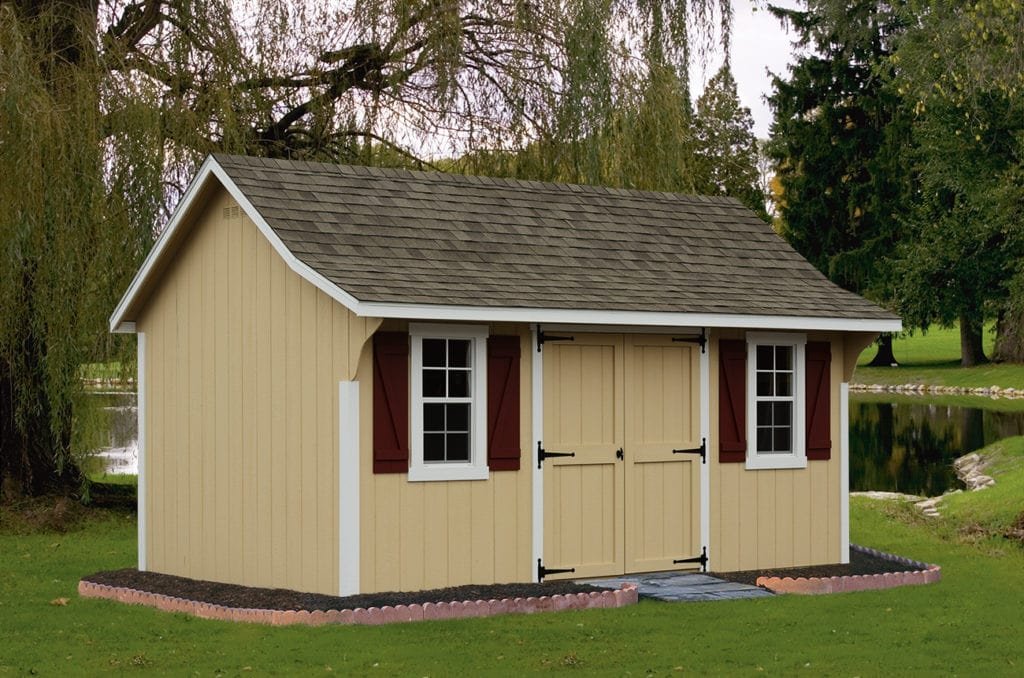A shed is a valuable asset for homeowners, offering storage space, workspace, and even a quiet retreat from the main house. However, like any other structure, a shed requires regular maintenance to ensure it remains functional and lasts for years. Whether you’re using your shed to store garden tools, equipment, or as a hobby space, keeping it in top condition is essential. This guide will walk you through essential tips and tricks to maintain your shed effectively.
1. Choose the Right Location
The location of your shed plays a significant role in how much maintenance it will require. Placing your shed on flat, well-drained ground prevents water from pooling around the foundation, which can lead to rot and structural damage over time. If your area is prone to heavy rain or snow, consider elevating the shed slightly or installing a gravel base underneath to improve drainage.
Pro Tip: Regularly check the area surrounding your shed for signs of water pooling or erosion. Taking preventative measures can save you from costly repairs in the future.
2. Regular Roof Inspection
The roof is one of the most vulnerable parts of your shed, and it requires regular inspection and maintenance to prevent leaks. Look for any signs of damage, such as missing shingles, cracks, or loose screws. For metal roofs, rust can be a major issue, so inspect for any signs of corrosion and take steps to treat and repaint any affected areas.
To extend the lifespan of your shed’s roof, clean off any debris like leaves and twigs that may accumulate over time. These can trap moisture, which can lead to mold growth and leaks.
Pro Tip: Consider adding a waterproof membrane beneath the roofing material to provide an extra layer of protection against leaks.
3. Seal Gaps and Cracks
Over time, your shed may develop small gaps and cracks, particularly around doors and windows. These gaps can allow water and pests to enter, causing damage to your stored items and the shed itself. Regularly inspect your shed’s walls, windows, and doors for any cracks and seal them with caulk or weatherstripping.
This is especially important if you live in an area prone to insects or rodents. Keeping these pests out of your shed will protect not only the structure but also the contents inside.
Pro Tip: Silicone-based caulks work best for sealing exterior gaps as they are more durable and flexible than other options.
4. Protect the Exterior
Your shed’s exterior is exposed to the elements, and it requires protection from rain, wind, and sun. To keep the exterior looking fresh and to prevent damage, apply a weather-resistant paint or stain every few years. This will act as a barrier against moisture, which can cause wood rot and metal corrosion.
If your shed is made of wood, it’s important to treat it with a preservative to protect against insects, mold, and decay. Similarly, metal sheds can benefit from regular rust treatments and repainting to maintain their structural integrity.
Pro Tip: Choose a UV-resistant paint or stain to prevent the color from fading due to sun exposure.
5. Check the Foundation
A solid foundation is crucial for the stability and longevity of your shed. Over time, the ground beneath the shed may shift or settle, which can cause the foundation to become uneven. Regularly inspect the foundation for any signs of cracks, sinking, or instability.
If you notice any issues with the foundation, take action immediately to level it out. An uneven foundation can lead to structural problems, such as warped walls, doors that won’t close properly, and even roof damage.
Pro Tip: Consider installing a vapor barrier under the shed’s foundation to prevent moisture from rising up into the structure and causing damage.
6. Keep the Shed Ventilated
Proper ventilation is essential for maintaining a healthy environment inside your shed. Without adequate airflow, moisture can build up, leading to mold growth and wood rot. Installing vents or windows that can be opened will allow fresh air to circulate and help regulate temperature and humidity levels inside the shed.
This is particularly important if you’re storing items that are sensitive to temperature changes or moisture, such as gardening tools, electronics, or wooden furniture.
Pro Tip: For sheds in areas with high humidity, consider adding a dehumidifier or moisture absorber to reduce the risk of mold growth.
7. Organize and Declutter Regularly
A well-organized shed is not only easier to use, but it’s also easier to maintain. By keeping your shed clean and free of clutter, you’ll be able to spot any maintenance issues more easily. Regularly declutter and organize the items in your shed to prevent damage to stored goods and improve airflow.
Invest in shelves, hooks, and storage containers to keep everything in its place and make the most of your available space.
Pro Tip: Label storage bins and containers to quickly identify what’s inside and save time searching for items.
8. Maintain Doors and Locks
Shed doors and locks are exposed to the elements and can wear out over time. To ensure your shed stays secure and weatherproof, regularly inspect the hinges, locks, and door frame. Lubricate the hinges and locks with oil to prevent rust and ensure smooth operation.
If your door shows signs of warping or the lock becomes difficult to operate, address the issue promptly to prevent further damage.
Pro Tip: Install a sturdy deadbolt lock if your shed contains valuable tools or equipment to enhance security.
9. Pest Prevention
Pests can be a major problem for shed owners, especially in rural or wooded areas. Mice, rats, and insects can cause significant damage to your shed and its contents if left unchecked. To prevent pests from making a home in your shed, seal any cracks or gaps in the walls, floor, and roof. Use steel wool or wire mesh to block potential entry points.
Consider using natural pest repellents such as peppermint oil or cedar blocks to deter insects and rodents from entering the shed.
Pro Tip: Avoid storing food, pet food, or birdseed in your shed, as these can attract pests.
Conclusion
With regular inspections and a few preventive measures, you can keep your shed in great condition for years to come. By addressing minor issues early, you’ll avoid costly repairs and ensure that your shed remains a functional and secure space for storage or other purposes.
If you’re looking for reliable and durable storage sheds, particularly in regions with diverse weather conditions like Colorado, it’s essential to choose high-quality materials and follow these maintenance tips. Remember, investing in proper upkeep will pay off in the long run by extending the life of your shed. For those interested in Storage Sheds in Colorado, maintenance is key to withstanding the state’s varying climate conditions.
Also Read:
Native vs. Hybrid: Which Mobile App Development Approach is Best for You?















































